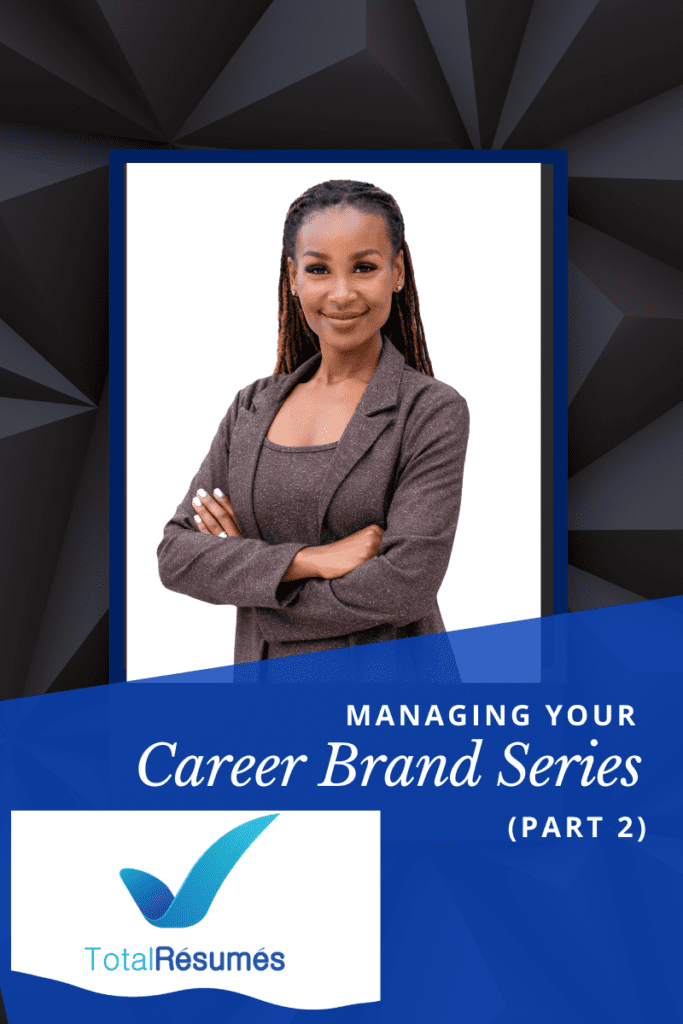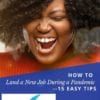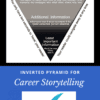
In the Total Resumes 2-part Career Brand Series, I talk about managing your career brand. It’s about telling the story of you.
See part 1 here.
How Having a Personal Brand Can Help You Advance In Your Current Job (Or Find a New One)
When you think about personal branding and job search, there are two things that usually come to mind: Your résumé and your LinkedIn profile.
Having an online presence on LinkedIn can be important in your job search. Your LinkedIn profile can present your credentials to prospective employers and hiring managers, increasing your chance of securing an interview. Your profile can help you be found.
Recruiters and hiring managers do searches on LinkedIn. A successful LinkedIn profile gives readers a snapshot of who you are and how you can contribute to their organization. You must understand and be able to articulate and communicate what makes you exceptional and compelling. That’s your personal brand in action.
Recruiters and hiring managers need help knowing what kind of position you’re focused on. It’s harder to find a job when you don’t know what kind of job you want. Conversely, it is easier to find a job if you know what kind of job you want.
Personal branding allows you to establish three things:
- a clear message of who you are,
- the experience you have, and
- how you can be an asset to the employer.
Many jobseekers develop their personal branding when they are looking for a new job. But personal branding can also help you be more effective — and visible — in your current job.
Develop your own communications plan in your current position. Increase your personal visibility by speaking, writing, and participating in social media. Once you’ve identified your personal brand, see how you can incorporate it into your everyday work life. This will make you worth more to your current employer (remember, superstars stand out!) and make you more attractive as a job candidate when it is time for you to look for a new position.
So let’s talk about how you might express your brand, both online and offline — in the real world.
Practical Strategies for Expressing Your Personal Brand (Online & Offline)
Now, it’s time to actually articulate your personal brand. Your personal brand has two parts: A tagline (or Headline) and a full positioning statement.
Your personal branding tagline is one sentence — ideally, 5-10 words in length. It should be easily understandable and easy to remember. LinkedIn Headlines can be up to 120 characters. That’s a good target to use for your branding tagline.
The full positioning statement has an immediately clear focus supported by 3-5 main points that further emphasise that focus. This personal branding statement will be used throughout your résumé, LinkedIn profile, and the job interview process.
Your personal brand should be authentic, relevant, compelling, and differentiate you from others.
When someone searches for you on LinkedIn, they will see three things: Your name, your LinkedIn Headline, and your location. In many cases, hiring managers and recruiters will make the decision to read your full LinkedIn profile based on just these three things. Consequently, the LinkedIn Headline acts like a newspaper or magazine title. It gives the reader an idea of what your profile will include (just like a newspaper headline previews a story). Being specific results in a much better headline. Great headlines attract attention, and the more people who view your LinkedIn profile, the better your chances of connecting with the right person who can lead you to your dream job.
Keywords also play an important part for you in being found by people who don’t know you on LinkedIn — this is particularly true for jobseekers who are hoping for contacts from prospective employers and recruiters. Keywords are a list of words and phrases that are related to your work — they are the words that a prospective employer would search for when trying to find someone like you. LinkedIn Headlines are searchable fields using the “People Search” function when someone is looking for particular skills, interests, qualifications, or credentials.
You can also incorporate keywords throughout your LinkedIn profile, including:
- Your LinkedIn Headline
- Current and former work experience
- LinkedIn summary section
- Specialties or Skills section
The keywords that you select for your profile must fit two criteria:
- They must speak to what makes you unique and what you want to be known for.
- They must align with what employers value — that is, what they want.
But don’t try to stuff too much information into the statement. The positioning statement is “overstuffed” if you have more than one conjunction per sentence, or more than two punctuation marks (commas or semicolons).
Also, don’t confuse big words with effective branding. Choose your words carefully. When possible, incorporate in keywords — nouns or phrases that can be picked up through online searches and are prominently used in applicant tracking systems.
You can learn a lot from online dating sites — because the concept is the same. You have to get someone’s attention.
Although you can create different targeted versions of your résumé to target different types of positions, you’re limited to one LinkedIn profile.
On LinkedIn, don’t copy other profiles. Be original! Look at other profiles for ideas, but don’t copy someone else’s narrative. Remember — your profile must speak to what makes you unique.
Be specific and single out the training, experience, and/or results that set you apart. Someone who is reading your profile should be able to recognise YOU in it; if what you wrote could apply to anyone with your job title, go back to the drawing board.
You don’t have to come up with anything earth-shattering in your personal branding statement. The simple point of differentiating yourself will help you be found.
A couple of key things that will help you stand out on LinkedIn:
Write your Summary in the first person.
Profiles with pictures attract 50-70% more inquiries than profiles without pictures. Have a good headshot of yourself. (Remember we talked about how personal branding is important in the job search and in being found on online dating sites. With that in mind, owners of dating sites say those who post photos get eight times as many contact messages as those without photos.)
Consider a full body shot of you sitting or standing. At a minimum, your photo should include your head and shoulders, not just your face.
- Smile! Radiate warmth and approachability in your photo.
- Photos should be professionally done, if possible (but NOT Glamour Shots)
- If possible, your hair and makeup should be professionally done (even if that’s by YOU — do your hair and makeup like you would if you were appearing on TV) — which is to say, a little heavier than you would on a normal day.
- Wear your most complementary colour.
- Don’t have other people in your photos (and don’t crop other people out of your shot — there should not be any errant body parts.)
- Make sure the background in the photo isn’t distracting.
- Relax. Look directly at the camera.
Take multiple shots and then ask people their opinion on which one makes you seem most “approachable.” You can also use a photo rating website like PhotoFeeler.com.
Another way to claim your personal brand online is through your domain name — or what’s known as a “Vanity URL” or www.WHATEVER.com. Your name is the most obvious choice. If your name isn’t available (Sorry, Chris Jones!), try alternatives. First name, middle initial, last name. First name, middle name, last name. First name, last initial. First initial, last name.
Consider publishing a blog — or use Twitter — to increase your profile and demonstrate your expertise. Offer your opinion and expertise on hot button issues, dissect obscure topics, and link to other articles and blogs of interest.
Your online profile/presence should complement your offline brand. Did you know how you dress can be part of your personal brand? All of us know someone who is known for how they dress.
When networking, your personal branding statement can be the answer to the question, “What do you do?” In an interview, your personal branding statement can be used when asked, “Tell me about yourself.”
CLOSING
So where do you go from here?
Spend some time completing the exercises we talked about today. Your handouts will give you guidance on developing your brand. Once you’ve come up with your brand, make sure it’s expressed across your career communication documents — your résumé, your LinkedIn profile, and in your 10-second or 30-second introduction you respond with, “So what do you do?”
If you’re struggling with developing your personal brand, you’re not alone. It can be hard to take an objective look at yourself without feeling like you’re bragging. If you want help crafting your personal brand, we can help!

